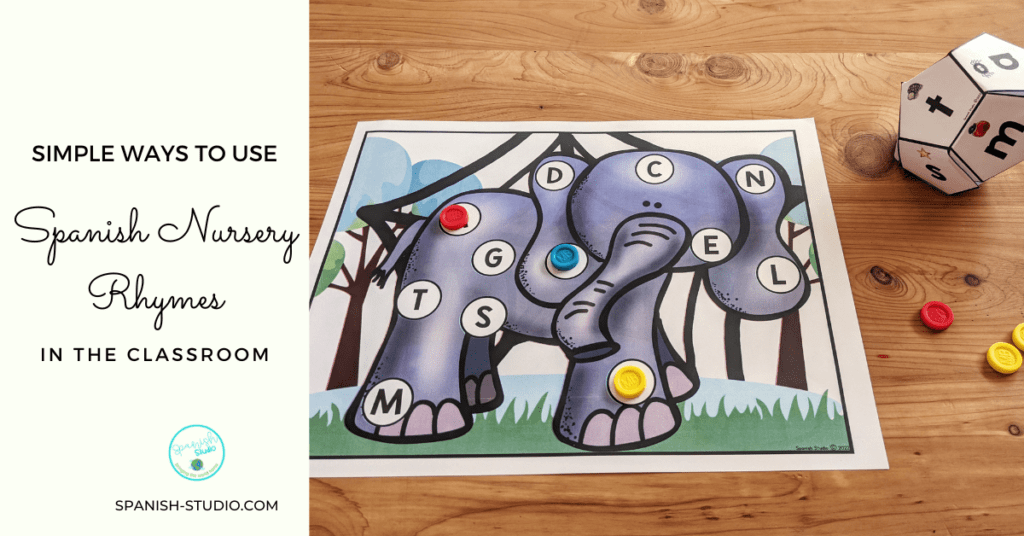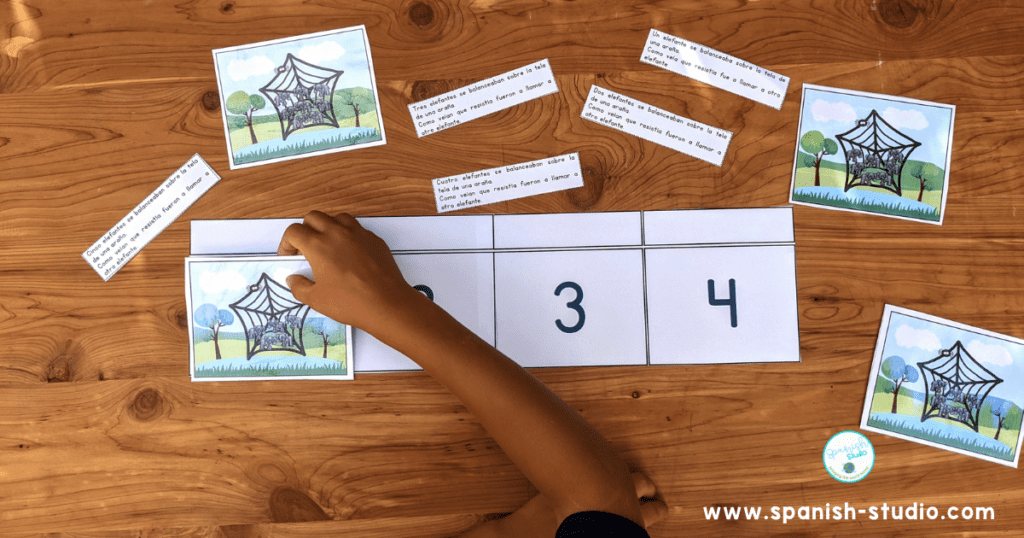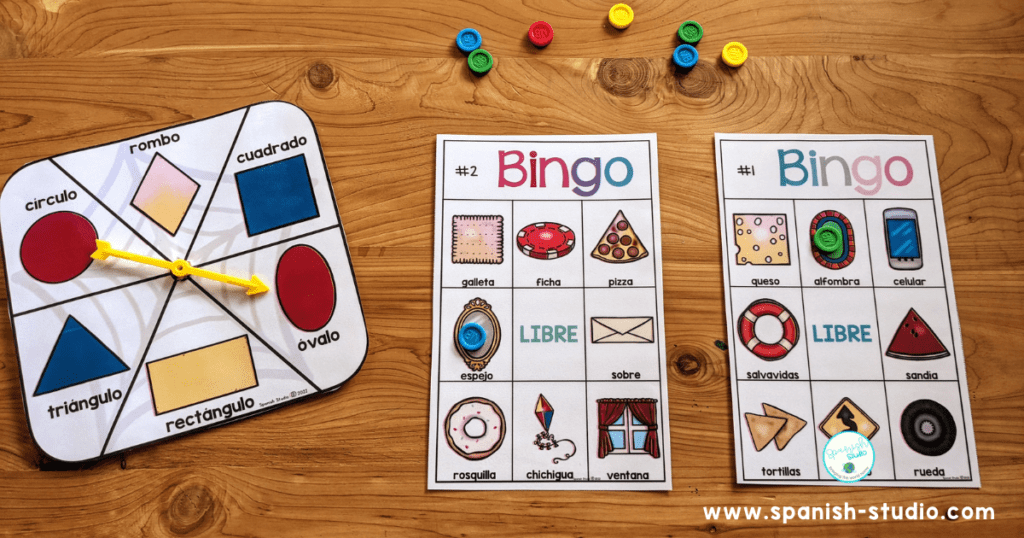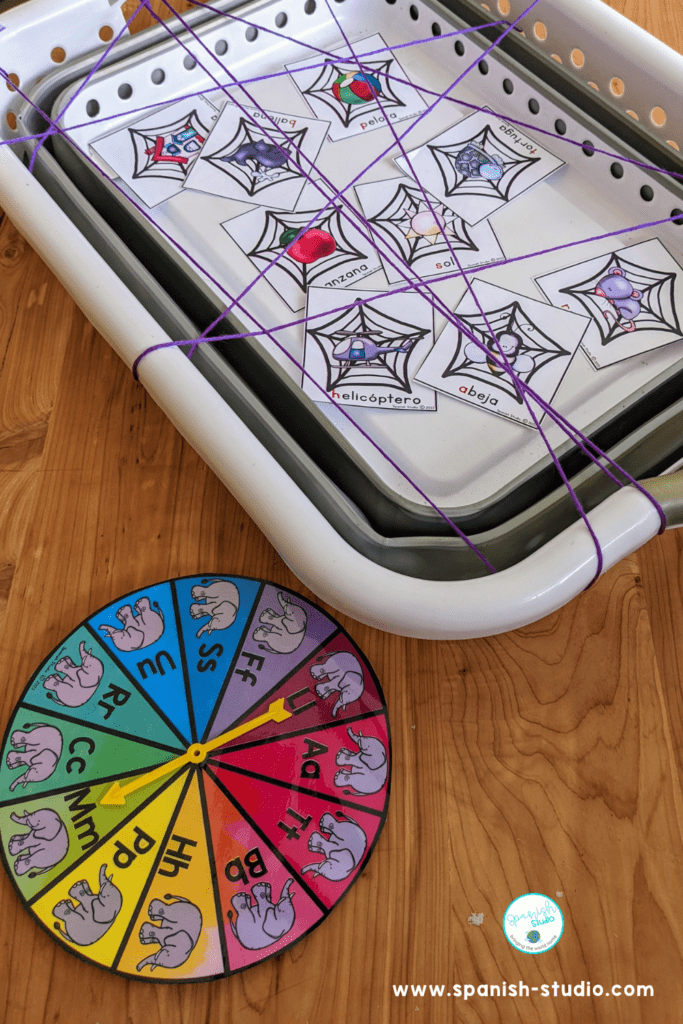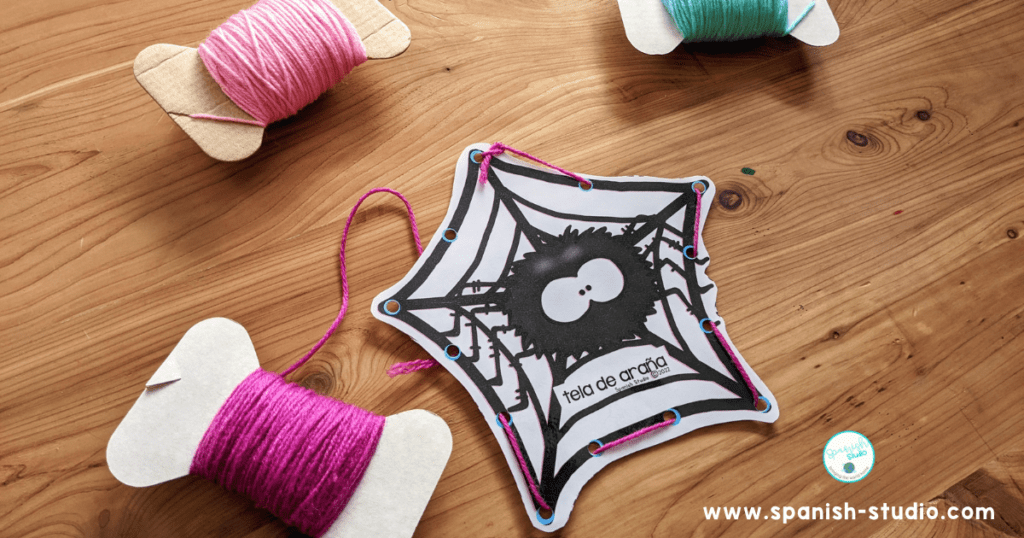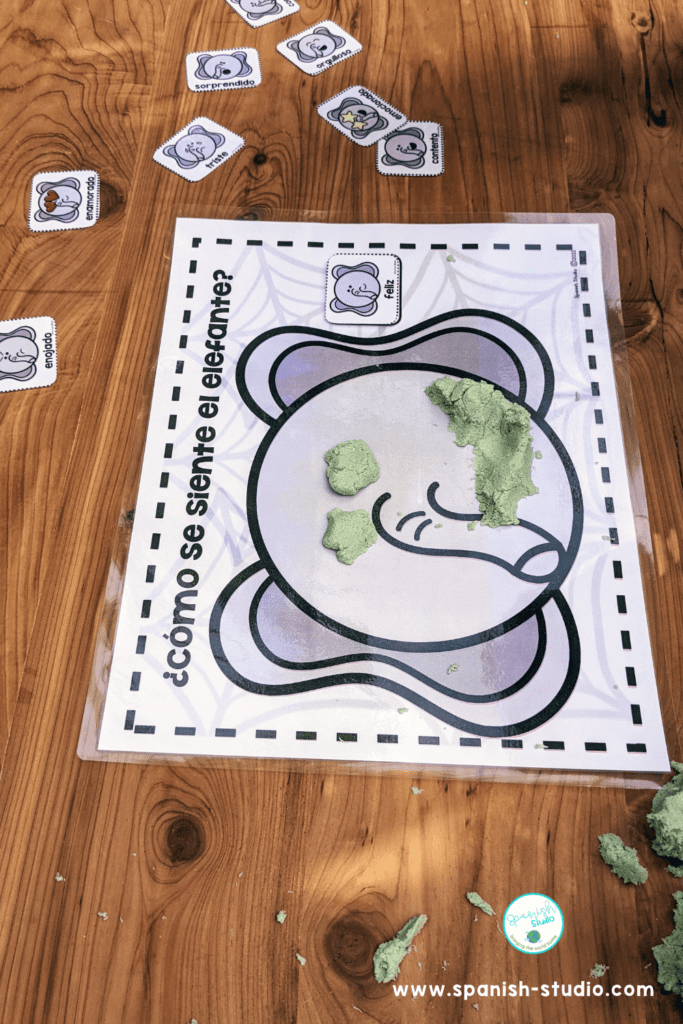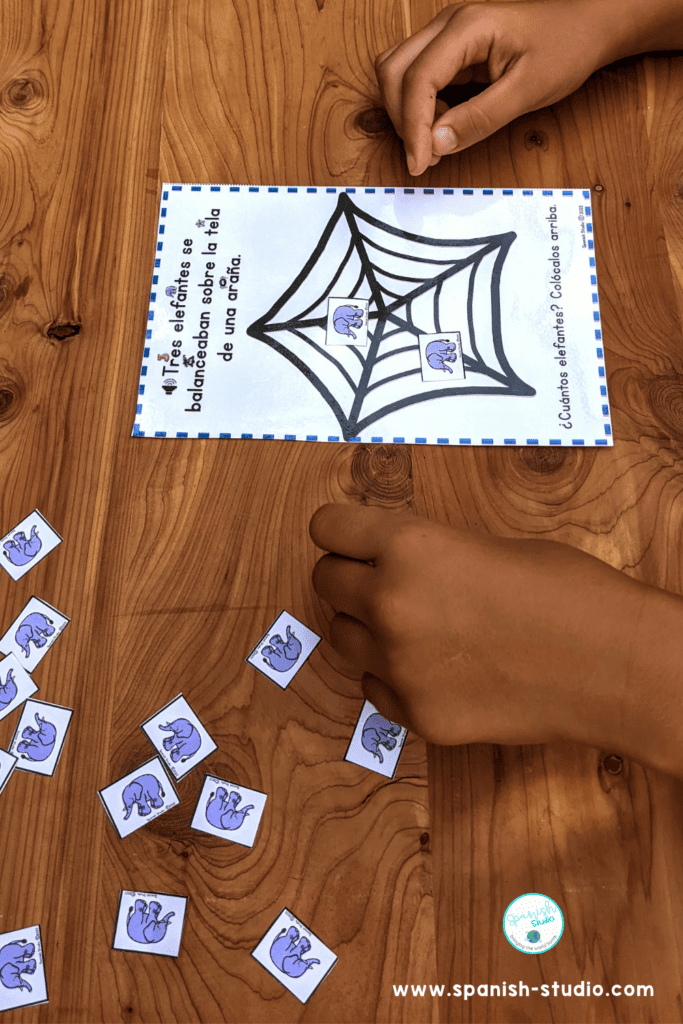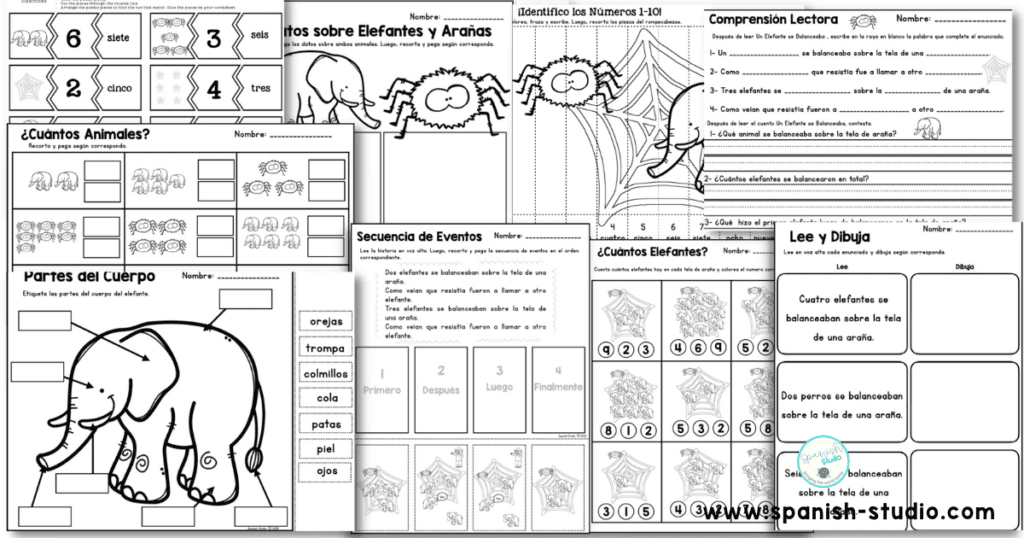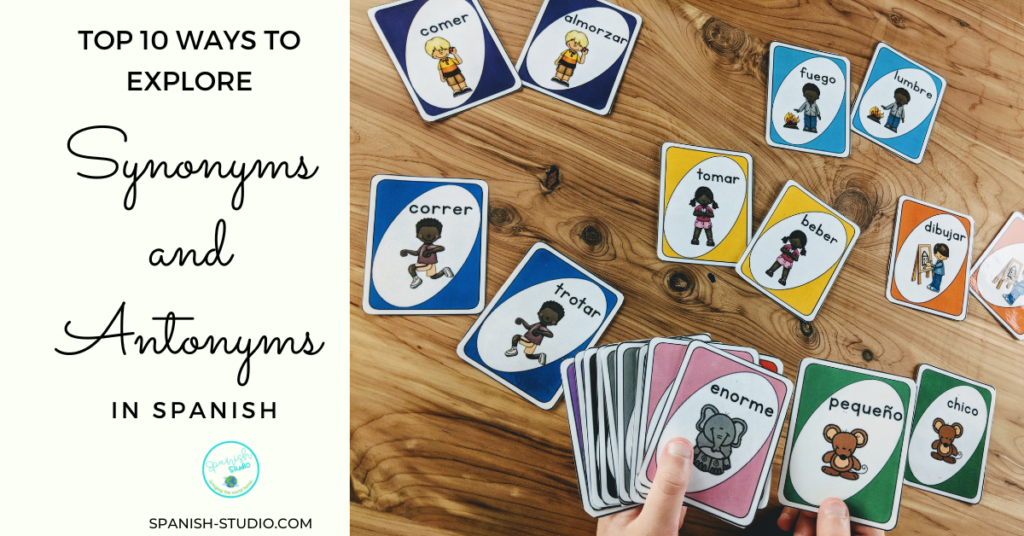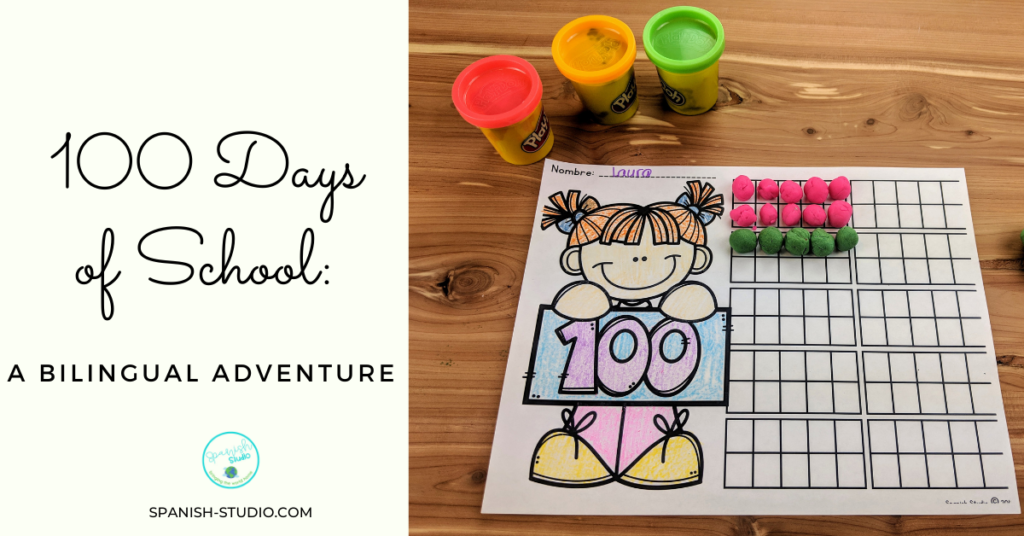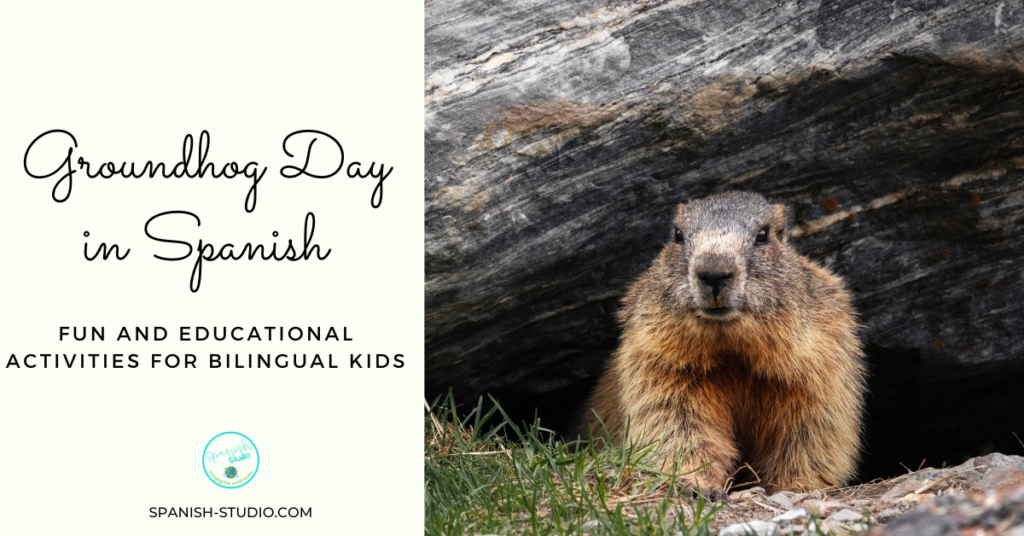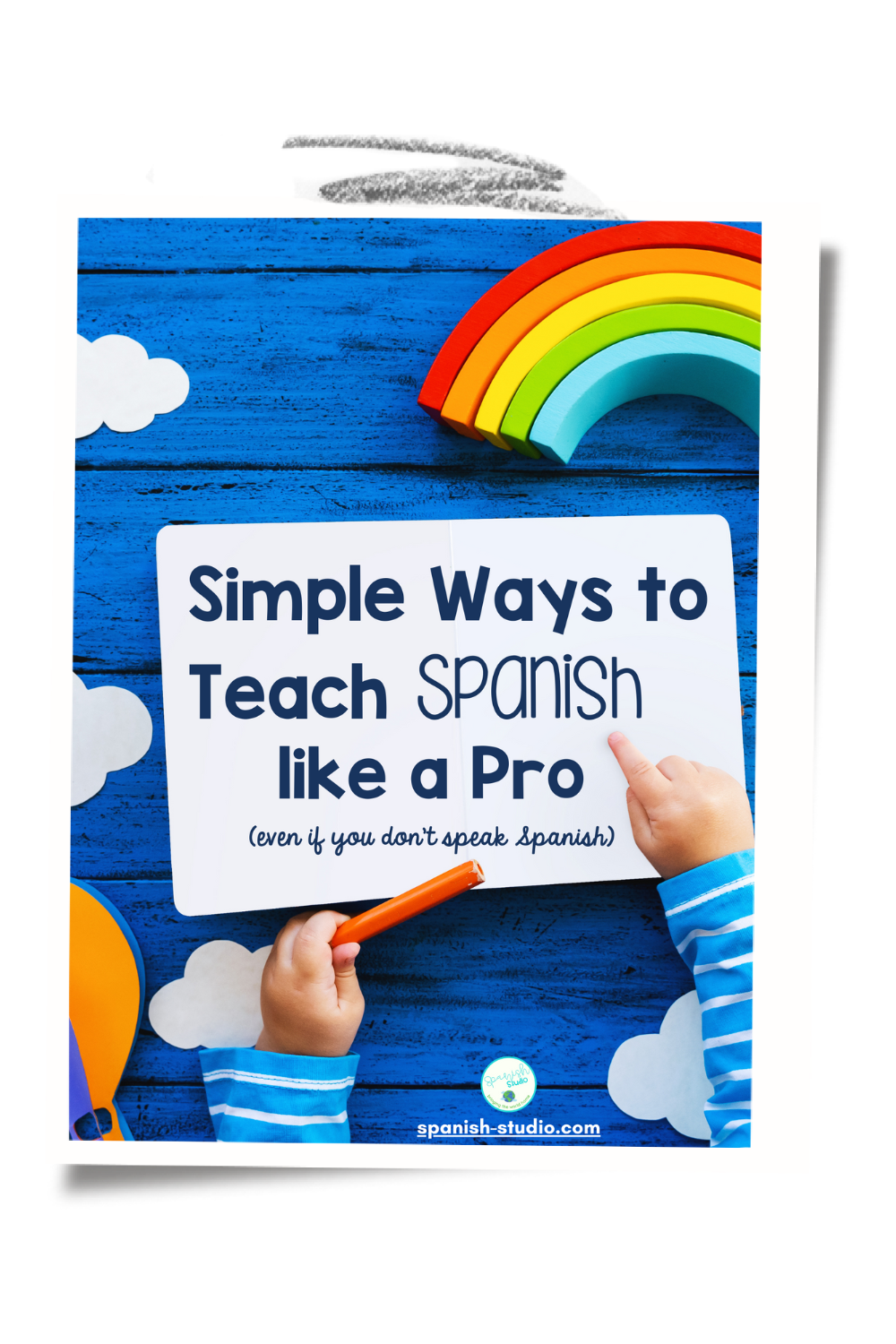Nursery rhymes in Spanish are a great tool to teach Spanish. The simple lyrics, catchy beat, repetitive and rhyming nature of words make it fun, engaging and easy for students to remember. They help develop reading and listening skills at an early age. Plus, they promote creativity, social interaction, and physical development.
Why teach Nursery Rhymes in Spanish?
Nursery rhymes in Spanish often have a version in other languages. This gives children the opportunity to be familiarized with the text they are being exposed to, making it comprehensible for them. In addition, using nursery rhymes in Spanish, helps children learn and practice new vocabulary words in a non-stressful environment. Because nursery rhymes are easy to learn and remember, they help motivate children into the learning process.
How can I use Nursery Rhymes in Spanish in the classroom?
First, I choose a Nursery Rhyme that has a version in my students’ native language, in this case, English. Using both the Youtube version and physical books, I introduce one Nursery Rhyme at a time. Then, I break my lesson into three parts: Reading/Whole Group, Small Group/Station Rotation and Independent Practice. Here is a list of suggested activities and routines for each part or section that have worked for me when teaching nursery rhymes in Spanish.
Reading time/ Whole Group activities
- Start your lesson by singing the nursery rhyme out loud. Get children familiarized and comfortable with the tune. Next, use Total Physical Response (TPR) to dramatize the song.
- Discuss with children what they heard and understood.
- Expose children to the nursery rhyme a second time by reading it. Make sure you have a visual display of the nursery rhyme that includes images of the vocabulary.
- Have children create their own puppets and hats.
- Dramatize the nursery rhyme using the puppets and hats.
- Discuss content with children. Use the puppets and TPR in conjunction to reinforce comprehension.
Small Group Practice
- After we finish with the whole group activities, I ask them to rotate through several stations that I have previously prepared. I instruct students to spend 10 minutes at each station.
- Stations can include any literacy and/or math-skill related activities. Here is a list of suggestions:
- Sequence cards: For this activity, students read or hear the nursery rhyme and place the card events in the correct order.
- Flashcards related games: Check out this post to find out the different games and activities you can have your children play using Flashcards.
- Bingo Game: This traditional game is a must in any classroom. Children practice the vocabulary words in a fun, competitive way. They love it!
- Matching Games: These types of games are great to practice and reinforce vocabulary.
- Fine Motor Skills activities: These are great for small children. Using hand-eye coordination, they practice and reinforce any concept and/or vocabulary word. This can include play dough mats, lacing cards, sorting, painting, puzzles.
Independent activity
Finally, I provide children with the opportunity to work independently by completing a math and/or literacy skill related worksheet based on the Spanish Nursery Rhyme being studied. I like to use this time for extra practice or to assess my students.
Based on the fact that children acquire language through repeated exposure to comprehensible input. In other words, they need to hear the language used in different contexts multiple times. For this reason, I like to teach without a predetermined schedule to follow. Every day or twice a week, I choose one activity from each part or section and repeat it as many times as my children feel comfortable with.
Interested in more?
Download my FREE Guide: “How to Teach Spanish Like a Pro (even if you don’t speak Spanish)”

